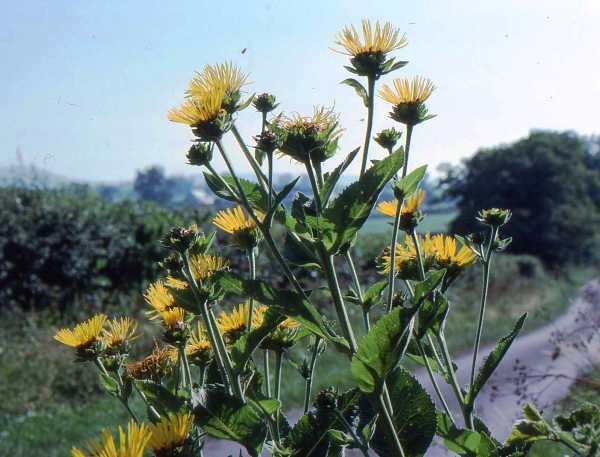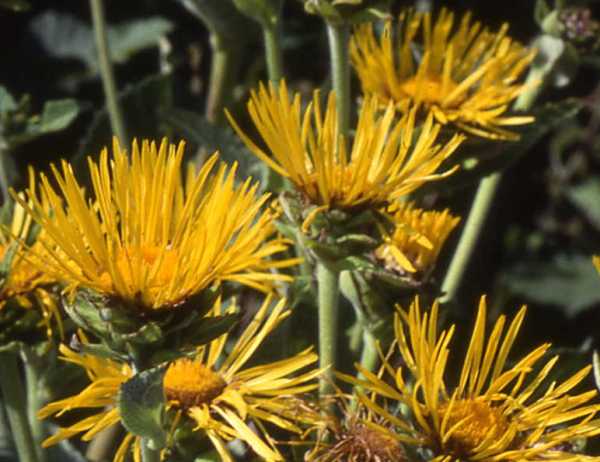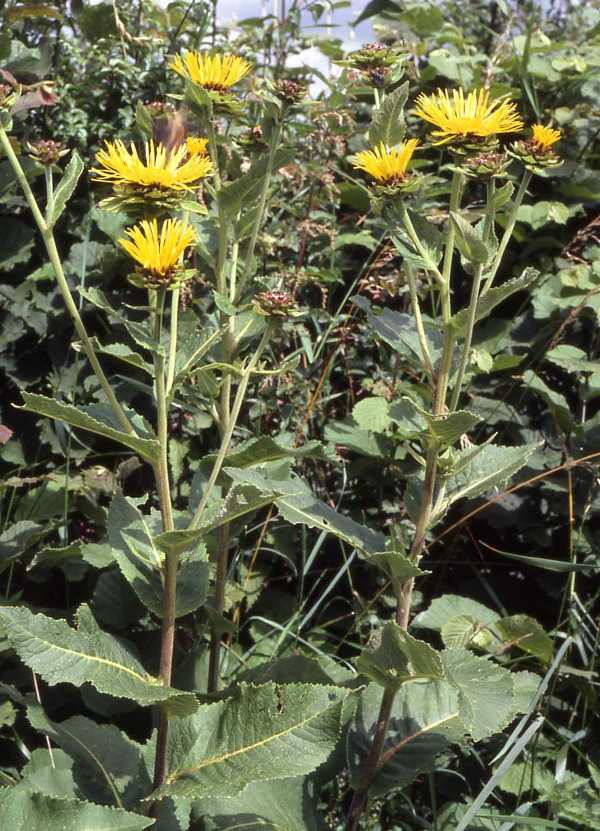Inula helenium - Elecampane
Phylum: Magnoliophyta - Class: Equisetopsida - Order: Asterales - Family: Asteraceae

This striking member of the daisy family has flower heads of 6 to 8 cm diameter. The basal leaves can be up to 40 cm long, and the flower stems are adorned with stalkless clasping leaves positioned alternately up the stem. Elecampane is a tall, hairy plant; it is sometimes found on cliff tops but perhaps most commonly on grassy banks beside woodland.

Elecampane was introduced to the UK from Asia, and its roots have long been used in herbal medicine as a treatment for asthma and other respiratory complaints. More recently the drug inulin, which is made from the plant, has been recognised in mainstream medical circles as an effective treatment for asthma.

You can find Elecampane in bloom from June right through to September. It is quite common, although localised rather than widespread, in Britain.
Acknowledgements
This page includes pictures kindly contributed by Anne Horsfall.
Sue Parker's latest ebook is a revised and enlarged second edition of the acclaimed Wildflowers in the Algarve - an introductory guide. Full details here...
Buy it for just £3.95 on Amazon...
Please Help Us: If you have found this information interesting and useful, please consider helping to keep First Nature online by making a small donation towards the web hosting and internet costs.
Any donations over and above the essential running costs will help support the conservation work of Plantlife, the Rivers Trust and charitable botanic gardens - as do author royalties and publisher proceeds from books by Pat and Sue.



